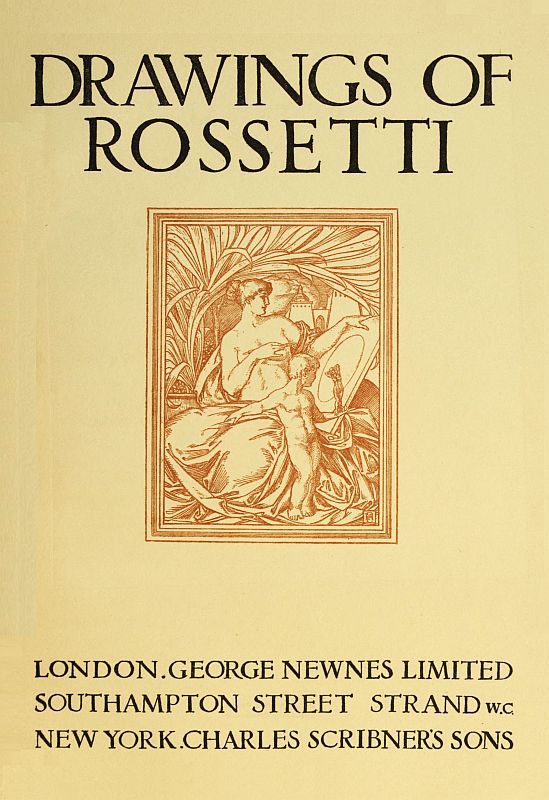
The Project Gutenberg EBook of Drawings of Rossetti, by T. Martin Wood This eBook is for the use of anyone anywhere at no cost and with almost no restrictions whatsoever. You may copy it, give it away or re-use it under the terms of the Project Gutenberg License included with this eBook or online at www.gutenberg.org Title: Drawings of Rossetti Author: T. Martin Wood Release Date: June 24, 2014 [EBook #46087] Language: English Character set encoding: UTF-8 *** START OF THIS PROJECT GUTENBERG EBOOK DRAWINGS OF ROSSETTI *** Produced by Paul Marshall, sp1nd and the Online Distributed Proofreading Team at http://www.pgdp.net (This file was produced from images generously made available by The Internet Archive)

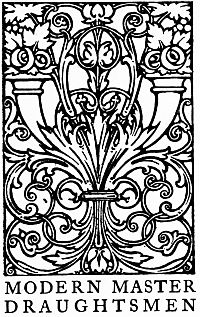
FRONTISPIECE
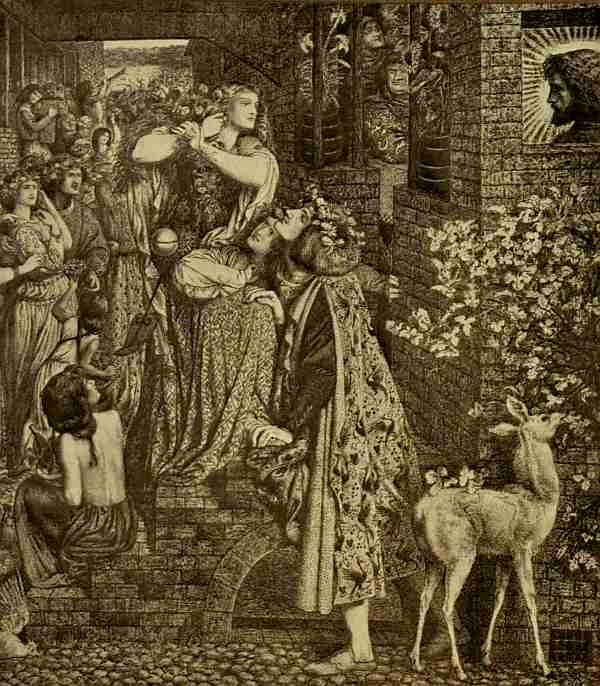
Photo, Mansell
MARY AT THE DOOR OF SIMON
DRAWINGS OF ROSSETTI
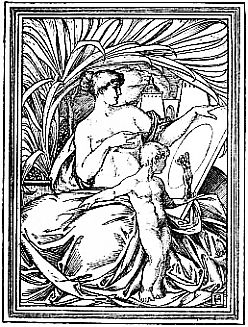
LONDON. GEORGE NEWNES LIMITED
SOUTHAMPTON STREET STRAND W.C.
NEW YORK. CHARLES SCRIBNER'S SONS
Ballantyne Press
London & Edinburgh
| PLATE. | |
| MARY AT THE DOOR OF SIMON | Frontispiece |
| LA DONNA DELLA FINESTRA | I |
| ST. GEORGE | II |
| ST. GEORGE | III |
| DANTIS AMOR | IV |
| LA GHIRLANDATA | V |
| THE PRINCE'S PROGRESS | VI |
| STUDY FOR THE SALUTATION | VII |
| THE SANGRAAL | VIII |
| LA DONNA DELLA FIAMMA | IX |
| THE ROSELEAF | X |
| HESTERNA ROSA | XI |
| STUDY FOR LA BELLA MANO | XII |
| THE PARABLE OF THE VINEYARD | XIII |
| STUDY FOR HEAD: DESDEMONA'S DEATH SONG | XIV |
| STUDY FOR DESDEMONA'S DEATH SONG | XV |
| STUDY FOR ASTARTE SYRIACA | XVI |
| MARY AT THE DOOR OF SIMON | XVII |
| THE COUCH | XVIII |
| STUDY FOR BEATRICE | XIX |
| SKETCH OF MISS SIDDAL | XX |
| RICORDITI DI ME CHE SON LA PIA | XXI |
| THE PARABLE OF THE VINEYARD | XXII |
| CHRISTINA ROSSETTI | XXIII |
| CASSANDRA[Pg 6] | XXIV |
| LADY WITH A FAN | XXV |
| PANDORA | XXVI |
| ORPHEUS AND EURYDICE | XXVII |
| THE PALACE OF ART | XXVIII |
| LACHESIS | XXIX |
| HAMLET AND OPHELIA | XXX |
| VENUS VERTICORDIA | XXXI |
| FORD MADOX BROWN | XXXII |
| MISS SIDDAL | XXXIII |
| DANTE GABRIEL ROSSETTI | XXXIV |
| STUDY FOR QUEEN GUINEVERE | XXXV |
| STUDY FOR DESDEMONA'S DEATH SONG | XXXVI |
| SIR LAUNCELOT IN THE QUEEN'S CHAMBER | XXXVII |
| STUDY FOR LA DONNA DELLA FINESTRA | XXXVIII |
| STUDY FOR DANTE'S DREAM | XXXIX |
| THE GATE OF MEMORY | XL |
| STUDY FOR THE BLESSED DAMOZEL | XLI |
| HOW THEY MET THEMSELVES | XLII |
| THE LADY OF THE GOLDEN CHAIN | XLIII |
| THE DEATH OF LADY MACBETH | XLIV |
| MRS. WILLIAM MORRIS | XLV |
| STUDY FOR DANTE | XLVI |
| DESIGN FOR A BALLAD | XLVII |
| THE PARABLE OF THE VINEYARD | XLVIII |
Transcriber Notes:
The caption on Plate XXXIII was changed to FORD MADOX BROWN.
The caption on Plate XXXV was changed to STUDY FOR QUEEN GUINEVERE.
In LIST OF ILLUSTRATIONS, changed MR. WILLIAM MORRIS to MRS. WILLIAM MORRIS.
THE DRAWINGS OF
D. G. ROSSETTI
BY T. MARTIN WOOD
THE intensely subjective nature of Rossetti's art is what gives it fascination for its lovers; it belonged to himself. Even in his early period and with his dramatic subjects this was so, and partly by the depth of imaginative meaning he read into the faces of women. The last phase of his art was entirely one of self-revelation; his own moments of sorrow were mirrored in one woman's face, moments in which he created sadly, living over again in them some hours that had been happy.
One might hazard the question whether it were possible for a painter such as Rossetti, seeking expression in his art for this intensity of feeling, to vie in the rendering of the external aspects with those painters who have approached life with that cold acuteness to the appearance of things and aloofness from their meaning characteristic of work that has contributed largely to the actual science of painting. To Rossetti life came over-crowded, over-coloured. There was too much for him to realise in his working moments. The very richness of his nature embarrassed his output. His gifts gave him so many ways of self-expression from which to choose. The phases through which his genius passed, the result of an inherited and rare temperament and its adventures, made the science of painting prosaic for him. He himself felt latterly [Pg 8] that this impatience had left his ideas pathetically at the mercy of his materials. Apart from the quality in colour to which he attained, one is conscious always in his paintings of the tragedy of genius striving for expression through an ineffectual technique. Rossetti's individuality, however, was so strong that it stamped itself everywhere; in spite of every limitation his art explains his attitude towards life. In his ability to make it show this his greatness lies, and in the fact that the point of view that it suggested was his alone. His art created for itself its own atmosphere—an unfamiliar one at first to Englishmen, with its subserviency of everything to a romantic emotionalism. The histories of the world for Rossetti were its stories of emotion, and in every place that his memory knew Love's image had been set to reign, Love who had wandered down through the ages decked with the flowers of art, offerings of bygone lovers, dead lovers to never dying Love. As a strange spirit Rossetti entered modern London. A heart rich from many forgotten experiences seemed to have lodged itself in him and he painted with eyes filled with the colours of old things. For him the tapestries could never fade in a room that had known love's history, nor the colours leave the missal which told the story of a soul.
How far his drawings were intended to foreshadow large paintings which he desired to make as windows for us to look with him into his romantic country we cannot say. As it is they show that it was in Rossetti's power to be the greatest imaginative illustrator of his century; that he was not so seems to prove that in this way, as in some others, he failed to attain to much that at first had seemed included in his destiny. In his paintings, in his poetry, in these drawings something there is that was new, and that brought a fresh phase into art and literature in England. It is something which has influenced permanently the nation's thought and has been even admitted into the procession of its fashions. For a time women tried to look as the women in his paintings, so much had the type he chose, which was his own creation, imposed itself upon their imagination.
The Rossetti woman, if she did not supersede the early Victorian type, at least helped to change it, and to mark a change which was taking place in the ideals of the nation. Fresh tendencies in national thought are always correspondingly represented by a change in the type of women idealised in its art and poetry. When the Victorian type went, the time had passed when homage was given to women for a surrender of their claims on life. The new type spoke of the ardent way in which another generation of women was creating for itself wide interests in the world. [Pg 9]
Rossetti displayed in his art the dramatic sense; we find him in his earlier drawings always illustrating dramatic subjects, rendering action in his figures in a way that proclaims him at once as one of those to whom the actions of men, the faces of women, come tragically or otherwise into every dream. One is enabled to write more clearly on this point by comparing him with his friend Burne-Jones. Burne-Jones' figures live in a dream in which the world has little part, whilst Rossetti's dream is of the world itself. His work is rich with the human experience that is absent in the art of his friend. He is accredited with being the leader of a phase of decadence, while, as a matter of fact, no one could have been further removed from anything like a "decadent" pose. Rossetti had an unconscious and unexplained sympathy for life that tragically pursued, and found itself shipwrecked upon, its own illusions. It was part of his art's vitality. There was little defiance in his attitude, it was altogether one of pity. Indiscriminate publication has familiarised the public only with the last sad phase of Rossetti's art, and unhappily this is esteemed characteristic. The intimate patrons of the painter possessed themselves of his early work; now it is inaccessible, and it is not at his best that he is seen in any public collection.
It is possible to like the art of Rossetti very deeply, and also to love the changing colours of the sea and the shadows of the sun clouds moving swiftly on the hills. But often to pagan lovers of such things the art of Rossetti, shuttered close in its mediaeval darkened rooms, has seemed as an almost poisonous flower, with its forgetfulness of the world without.
It can never be sufficiently emphasised how necessary it is in judging any art first of all to share some of the mood in which it was created. Those who would enter into the atmosphere of Rossetti's art must find their way to it in the darkened light of dreams. It stands in no relation whatever to the workaday world.
A poet whose writings realised an opposite temperament to Rossetti's own would have had the test of poetry that it could be taken to the fields in the early morning and read. To attempt to bring a painting of Rossetti's into relationship with nature out of doors would to all intents put an end to the reason for its artistic existence. It would be to demand of it that it should strike a note in tune with a mood the direct opposite to that which it was its intention to create. Though art should always be examined in its own atmosphere, much of the criticism applied to Rossetti is but the bringing of his art out into the fields. It is not valuable criticism that approaches work in a spirit of this kind. [Pg 10]
A great deal too much has been made in writing of Rossetti's Pre-Raphaelitism. To a nature like Rossetti's any school, any methods he may have taken up with, or inspired, would be largely accidental to his environment. Arrived at a time of reaction, of revolution in English painting, with his qualities of leadership he threw himself into Pre-Raphaelitism as a new movement, but it is more than probable his genius would have found methods of expression as personal to itself in the refinements that entered English painting in the wake of Pre-Raphaelitism,—only the Pre-Raphaelite movement could not have been but for the ardent genius of Rossetti which poured inspiration into all those who gathered about him. He departed from Pre-Raphaelite tenets just when it suited him; its hold over him lay chiefly in that he liked to realise very definitely the shapes of objects in his art, because they made his dreams real and gave pleasure to those eyes of his that so hungered after every sign of beauty. The secrets of art lie, after all, more within the vision than in expression. That Rossetti could have directed his genius into another manner from Pre-Raphaelitism seems possible from the fact that in his poetry so many styles meet and show his variegated temperament expressing itself in opposing forms. What was of literary significance in Rossetti's art perhaps gained from Pre-Raphaelitism, for Pre-Raphaelitism made things symbolical. To nearly every object that they brought into their pictures the Pre-Raphaelites gave meaning other than its own, other than that which was simply artistic. Now Rossetti, looking on his art and its relationship to life from a literary more than from an artistic standpoint, striving to attain in art not an imitation of life but an expression of his ideas about it, found, as we have said, painters' problems a difficulty. He was irritated by difficulties which to a whole-hearted painter present pleasures of conquest in proportion to their resistance to his craftsmanship and skill. In other ways Rossetti lacked the characteristics of really great painters as such; he had not the seeing eye that gives to every outward thing a shape and colour already formed within the mind. From such a cult of the eyes as this comes the true painter. By taking thought art does not become a metaphor for ideas, though the whole aim of its subject may be to make it so. Art is always metaphorical, whatever its subject and however unconsciously, to itself. The presence of genius only is needed. Yet because in actual pigment red can never be anything other than red, ideas [Pg 11] are clothed more easily in the colour of words, for in themselves words have no colour and they have no existence other than the existence which they have in thought, and the colour which any language lends them.
Rossetti could not learn painting instinctively as he learnt writing; for him the materials were not so simple, they remained during a long apprenticeship an obstacle rather than an aid to impassioned expression, and from his apprenticeship he never emerged into anything approaching freedom. Upon the vivacity of the imagination in them, and not upon subtlety of line or of observation, the claims of Rossetti's drawings rest, though it is wonderful how often he lifts his art up to the level of all that he has to say and imposes upon us a forgetfulness of its shortcomings. His studies do not reveal a master who looked upon objects and beautiful forms for their own sake and for the sake of the tender drawing he could find in them. Rossetti, indeed, loved a visible world, and liked to interpret the beauty of natural objects, but he was always in haste to get the scene set where such objects were, after all, for him only as accessories to the thing enacted, or as notes in an orchestration; of value but not existing by themselves. He gave to every object the import of the drama in his mind; in his art things seem to have about them the meaning lent them by an imagination that spiritualised objective things so that they seem there in essence only and rendered with a sympathy that shows how alive to the significance of outward beauty Rossetti was, and how his own time and every-day surroundings were fused and blent with his most far-reaching imaginings. To turn to outward things, and to study them as merely offering various surfaces to the light, holding depths of shadow, possessing lines of delicate shape, was, however, impossible to his temperament. The characteristic story of Madox Brown setting in early days the young Rossetti down to paint such still life as jam jars, and of the young painter's impatience, shows that to paint or draw the objects for their own sake only was not congenial to him. There was very likely sufficient of the true painter in Rossetti to make such study a delight, had his mind ever been still enough for his hand to playfully carry out such problems; but always at the back of his mind, at the back of the world for him, a strange drama of love and beauty went on. How then could time be spent in studying what, after all, were merely objects, how could time be spent in deliberating over the study of them? And so the drawings which Rossetti left us are seldom studies of poses and draperies, such elaborate scaffolding as [Pg 12] that upon which the art of Burne-Jones was built. They are little pictures in most cases, in which the pencil or the pen afforded a readier and less laboured means of realising quickly the life dramatic of imagination.
Illustration essentially suited his genius in so far as in small dimensions it was easier to reflect easily, whilst the power of creation lasted, what was moving in a mind that was held by no one mood for long. It suited his genius also because it minimised the labour of creation, and with Rossetti it was always apparent that creation was a labour. He himself has said in that other art in which perhaps he always found his happiest expression—
A body that grew faint under the strain of over-feverish genius undoubtedly imposed its indolence upon Rossetti's spirit, so that he shirked the difficulties of his earlier subjects until the downfall of his art set in with the constant production, for indiscriminating purchasers, of a face that grew more and more distant from the beautiful type of his earlier inspiration, which till the end he always pathetically imagined himself to be creating.
Turning to the illustrations, that called A Drawing for a Ballad with its free and loose handling, its qualities of selection and emphasis, show how great in many ways Rossetti was. What lines could be simpler than those in the girl's dress? In such a sketch as this, in the little things, Rossetti is masterly, and one cannot here separate what he has to say from the saying of it. This sketch shows an artist great enough to be unpretentious, and it shows that the happy qualities of mind, united with its craft, sprang from his habits of thought. We see in it with what natural tenderness he has sketched, how by one of the girl's hands her companion's face is lifted to the kiss. This naturalness holds the secret of Rossetti's power. His art was consciously set on decoration, but this is not a decoration; in all that he has read into the miniature faces and in the embracing of the hands, we get in this sketch more intimately than anywhere else evidence of his great heart. This dramatic sympathy would attract every one could it shine more often through the carelessness, the unhappiness, that at the end obscured it. In this way we must think of Rossetti as a failure, and a great man cannot fail once without blinding the world to his many successes. Had Rossetti possessed [Pg 13] no sense of colour, and had he not completed many large pictures and elaborate illustrations, but only followed this one path as far as he could go, doing only such things as this, without being a poet and without being a painter, who knows to what extent we should have praised him for these slighter things alone? There is no doubt that we expect so much from him, and he has given us so much in other ways, that we forget the treasures hidden here. One could wish that he had always worked in his drawings with the freedom indicated in this sketch, but it was not the fashion then. Work in Rossetti's day had to come into the market elaborated to the point of its soul's extinction in order to be taken seriously. Now that we have taught ourselves always to value first any indication of the spirit, what would we not give to possess ourselves of work by this artist in impulsive drawings, and it must have been within Rossetti's power to do them down to the last.
The drawing of the death of Lady Macbeth is one of the most wonderful things Rossetti ever did, and it is characteristically marred by imperfect drawing. The drawing is of great quality throughout, except for the figure with head averted. Some wonder why the ability to make the rest of the picture perfect failed the artist here. It is probably because the action of each figure is controlled only by the imaginative impulse that sways the whole composition, that gives to every part of it dramatic intensity as if executed all in one mood, bringing in one moment of creation the whole to life on paper. Those in sympathy with the nature of Rossetti's art do not count this piece of bad drawing a disastrous flaw. The rarity of genius makes them accept everything gratefully; it disarms a cavilling attitude. The fault in their eyes even seems to add to the tense note struck as a changed note in an over sweet harmony. Its dissonance breaks the monotonous rhythmic decoration, and its harshness relieves the detail so delicately wrought. Rossetti is of the extreme few who have finished minutely without sacrificing the qualities of greater significance than finish. His art is great enough to make us forget the detail and to render us for the time oblivious of it. In our absorption in the subject it seems for a time not to exist, only the tense mood exists, the intense moment. In a picture in which the moments are aflame with tragedy Rossetti drew this figure moving slowly and with decorative convention. All the figures are controlled by such a convention; they are partaking in a high drama. Such a convention as Irving has in the art of acting gives something to the dignity of tragedy. The conventions of Rossetti too are so much in the spirit of high [Pg 14] art, they conform so well to the claims of art, that they lend beauty to that power of his of giving to his drawings dramatic perfection. In regard to the particular figure of which we write it is better, faulty as it is, than if it had been redrawn in another mood and given again to the picture. It is to be regretted, of course, that it did not come rightly as it is, but it is less to be regretted than if he had substituted dead perfection for living imperfection, a studied and acquired idea of the pose in place of the instinctive one.
The first illustration for Desdemona's Death Song is simply a rough sketch, but even taken as such it shows how blind or how careless in the matter of form Rossetti at times could be. Here the lower part of the figure is so obviously lacking in proportion that it prevents us accepting an otherwise characteristic drawing as such. Still of Rossetti's best moments is the controlling grace of the bend in the maid's wrist, and the movement of her head as she combs Desdemona's hair. The curtain blown into the room by the wind is one of those touches Rossetti gives everywhere; by insistence on such an incident he makes us live the moments depicted in his pictures—just as we find ourselves in moments of extreme tension watching eagerly something absolutely trivial and making some accident portent with meaning.
In the second and completer study for this picture we find the proportions corrected; thought and after-thoughts have developed the artist's intentions. Desdemona, with her hand hanging thoughtfully, is an improvement on her attitude at first. The maid, however, has lost much of the spontaneity of her original gestures.
Like all those in whose art we find phases of an extraordinary beauty Rossetti could often draw in the most uninspired fashion, presumably where his interest flagged. In the drawing of Hamlet and Ophelia, Ophelia is charming; but it is with difficulty that we are reconciled to the Hamlet; it is difficult even to understand in what position the figure is standing; not that this indefiniteness often matters in art, but here, where everything else is so precise, it provokes dissatisfaction. From Rossetti alone could have come the background with the winding ways parting and meeting rhythmically with steps up to the bridge. Such architecture as this, and all the quaint furniture in his pictures, were designed by himself. From his facile imagination anything might come. Certain objects that were full of associations of old things he returned to often in his drawings, such as old Books of Hours with all the sentiment that many hands had given to them. The niche in the picture containing the Crucifix and the Breviaries is significant of the Religion in Rossetti's art. This was his religion, to think of Divine things by the legends of a romantic Church. [Pg 15]
In comparing the study for Christ at the House of Simon the Pharisee with the completed drawing, the question arises whether, with the elaboration that has come into the latter, some of the intensity of the study has escaped; or whether, on the other hand, the subject has gained. The simplicity of the first undoubtedly possesses something which is subsequently lost in elaboration, and yet taking the completed picture and looking into it one finds a lesson in Rossetti's methods. We find that by dwelling upon his subject he has emphasised certain notes, has repeated as it were a refrain, and made more spirited and poetic in rendering the figure of the lover in the foreground. After-thoughts have given every touch that could possibly enrich, and, at the same time concentrate, dramatic motif in this figure. The embroidery on his coat, the flowers in his hair, the hair itself, and the face so mocking and fascinating and sure of itself, is more in the spirit of the subject than the gentler face as it appears in the sketch.
The figure of the Magdalene gains in many ways as completed, and though the distressed loving face and the flowing hair of the sketch are changed, the alteration of the expression on the face from one of intense distress to one of proud determination is very interesting as showing how his subjects grew and changed under his hand. It is wholly to the gain of the picture the different gesture which he has arrived at in the second drawing, where the Magdalene with both hands throws the flowers from her hair. The dramatic quality upon which we have insisted as part of Rossetti's art is nowhere better shown than in the deer quietly eating leaves from the wall, all unconscious that there is acted out beside it the most pathetically beautiful drama of the world. One misses in the finished picture some of the sensitive drawing given in the sketch to the Magdalene's dress. Here, instead, her clothes are as if she were perfectly still; they give no indication of her movements and the stormy action round her. That is the fault of Pre-Raphaelitism—to fritter away the spirit for the sake of the embroidery upon the body's clothes; to lose emphasis in elaboration, to sacrifice a greater beauty for a meaner one.
Certain characteristics that are strongest in Rossetti's art are the outcome of the intensely human course his imagination took. His drawings are of the kind that one can live with long; looking into them often one is always rewarded by finding some new thing, and one's thoughts are ever being arrested by new appreciation of some [Pg 16] quaint conceit. The depths of Rossetti's imagination are such in these drawings that we may look into them whilst watching the changes of our own thought.
The best that art has given to us has often come from artists in a quite sub-conscious way. Because Rossetti's genius was so many-sided it is probable that he could explain most of what he did to himself, and if in the picture of which we have been speaking we take such a thing as the alterations between the figures in the background, and as they are shown in the sketch, it will seem apparent that he gave reasons to himself for everything in his compositions, and did not drift into anything by accident in aiming at design. In the sketch the nearest figure pursues the Magdalene beckoning, in the finished drawing her movements are arrested, she and the other figures pause before the door, speechless with cynical amusement and surprise as the Magdalene enters.
You should have wept her yesterday was done as an illustration to one of his sister's poems. It represents the return of the Prince after many delays to find his lady has died, believing him unfaithful. The ugly drawing of the Prince spoils an otherwise beautiful design. This ugliness is only compensated for by the six girls who turn their pitiful eyes so naturally from their prayer to look towards the Prince. The grace of girlhood in their faces must come as a revelation to some of Rossetti's critics.
The illustration to Tennyson's "Palace of Art" should excite us as curious and beautiful. We have in it one great poet's illustration for another's poem, made with perfect art. We have in this drawing the echo of the one's imagination in the other. Rossetti has brought the drawing on to the paper as a dream. An immense courage is demanded of the artist, when he shall forget his reason for a dream, and when he has the courage not to reconcile his dream with the demands of the prosaic mind, demanding only what is prosaic. The lines illustrated are—
The drawing interprets, and it is wonderful that it should do so, the imaginative mood in which we feel these lines were written. Like music they bring their message in mystical sound. One accepts their beauty feverishly. In such a mood as they invite reason greets imagination. The words do not represent things or a place, but a mood and an emotion. In them is just such a strange and beautiful medley as music brings to us, as great art always makes reasonable to us. [Pg 17]
One thing we must not forget in criticising Rossetti, and that is that we are speaking of one who was among the first to enter into the inheritance of his age, that on these grounds his art is placed amongst the arts which in every age live by reason of their significance. Commemorated in Grecian art is the perfected form of man as the flower of animal evolution. With this perfection attained another day of creation was begun and is continued, in which the things of the spirit are being built up until the perfect spirit is made. And just as it was long before man so far awoke to a knowledge of the beauty which triumphs in him as to worship his own shape (placing before himself his own image as the standard to which the gods had led him, and from which he might not go back without fear of their displeasure) so not everywhere yet is the spirit of man learning its own beauty from the consciousness of itself to which it has attained.
Such art as Rossetti's, with its subordination of everything to an emotional and spiritual motive, does certainly anticipate, as other modern work like the sculpture of Rodin anticipates, the direction in which the greatness of art in the future must tend. That which is concerned with character, with all that outwardly gives indication of the soul, has appeared and re-appeared triumphantly throughout the history of art—a spirit changing its raiment. The art of Rossetti fails just in so far as its craftsmanship is a failure, but its imperfections cannot take away its significance. Christianity made the spirit visible and took serenity from the face of art. To-day Art is spiritualising itself by its refinements. It is perfecting itself through such an impressionism of the senses as we have in the art of Whistler, and through the science of the impressionists of France. Their subtleties are based on the broad truths given by masters long ago, and fearful lest any sources of our inspiration should be forgotten what is modern in art has in turn assumed almost every antique shape.
An old manner of painting which was great, does not share its greatness with the modern imitator, but it does not necessarily withhold it from him. Art may clothe itself in some old style, as Rossetti's did, and what shape it takes, whether based on the old or growing out of the new, does not matter when it is the messenger of inward things. [Pg 18]
And since no beauty of bodily form greater than Grecian beauty is possible to art, that art will be great which betrays the spirit's flame. The future of life and of art are one. It is inevitable that art shall be great as the spirit of man grows rich. It is for this that we have left behind the serenity which was of Greece and of the partly awakened soul. [Pg 19]
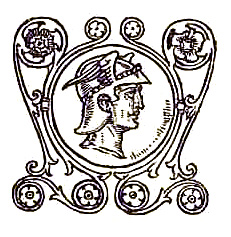
PERMANENT REPRODUCTIONS OF
THE PICTURES AND STUDIES BY
DANTE GABRIEL ROSSETTI, G.F. WATTS,
O.M., R.A., AND SIR EDWARD BURNE-JONES
ARE PUBLISHED BY FREDK. HOLLYER, 9
PEMBROKE SQUARE, KENSINGTON, W.
ILLUSTRATED CATALOGUE 12 STAMPS
[Pg i]
PLATE I
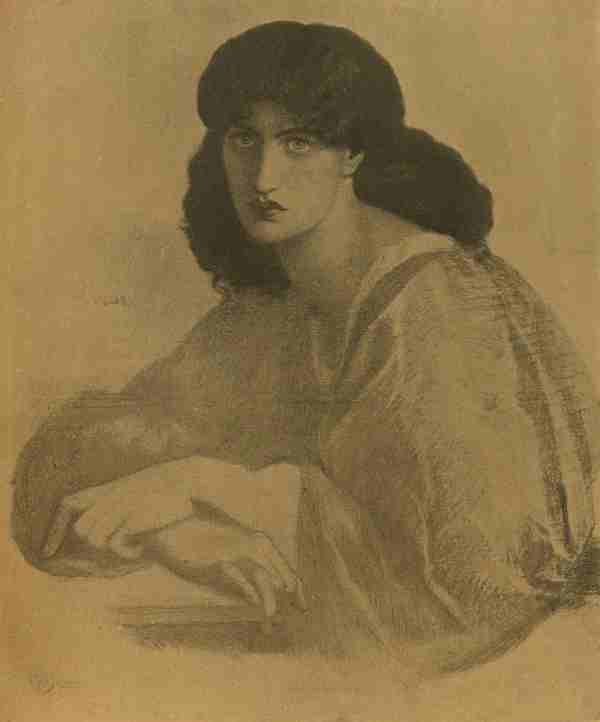
Photo, Mansell
LA DONNA DELLA FINESTRA [Pg ii]
PLATE II
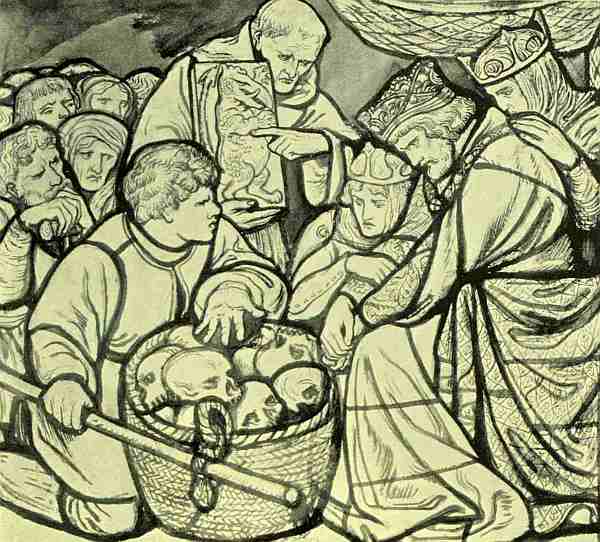
Photo, Hollyer
ST. GEORGE [Pg iii]
PLATE III
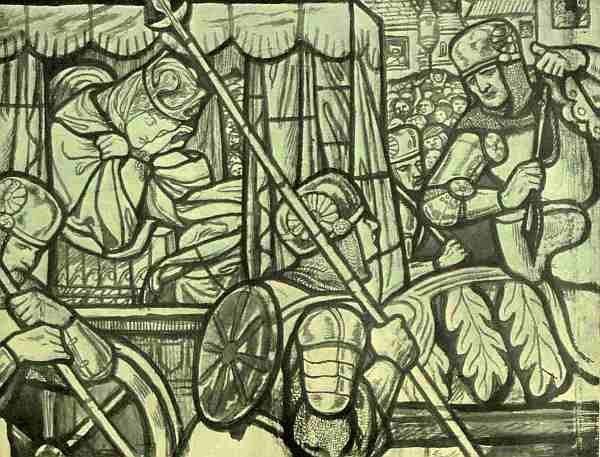
Photo, Hollyer
ST. GEORGE [Pg iv]
PLATE IV
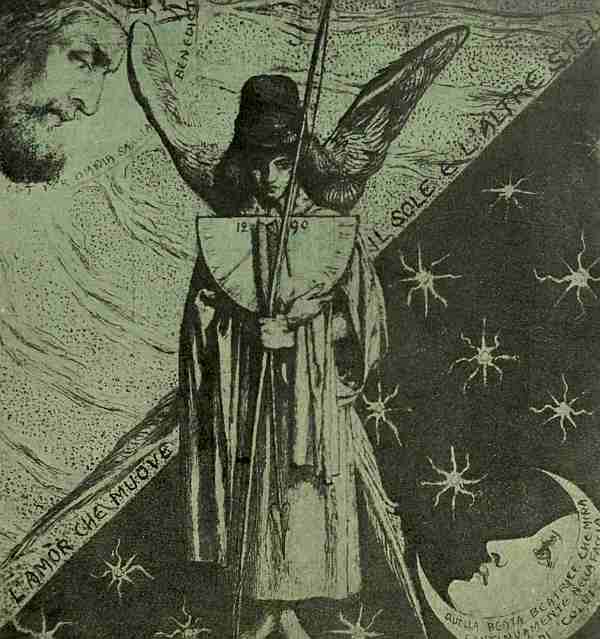
Photo, Mansell
DANTIS AMOR [Pg v]
PLATE V
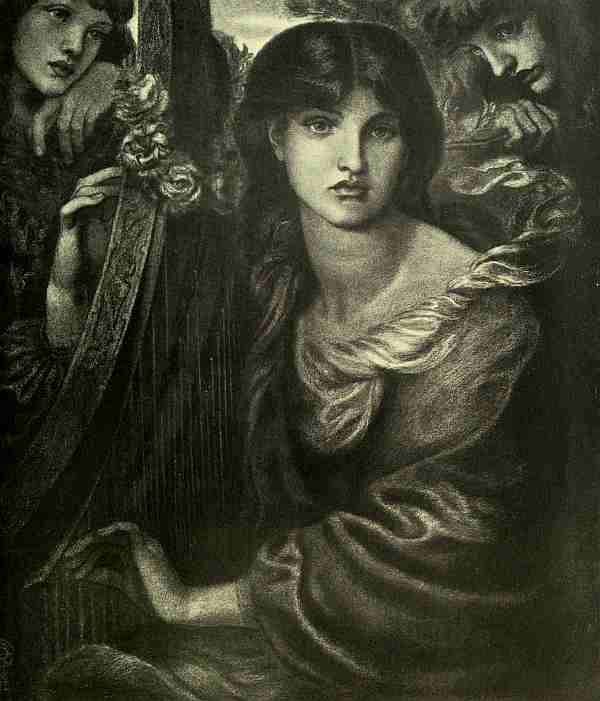
Photo, The Autotype Co.
LA GHIRLANDATA [Pg vi]
PLATE VI
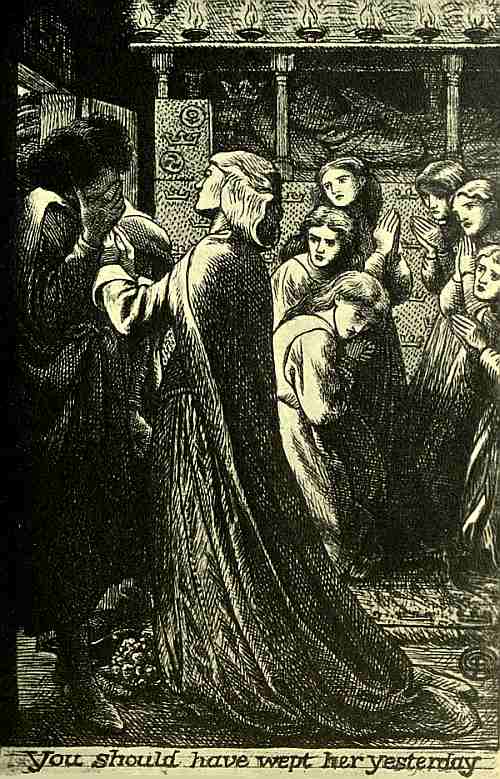
Photo, Mansell
THE PRINCE'S PROGRESS [Pg vii]
PLATE VII
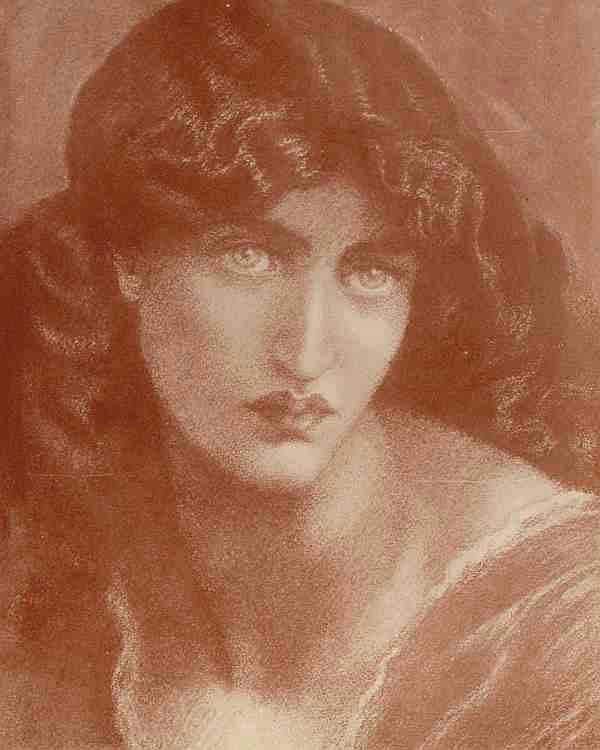
Photo, Hollyer
STUDY FOR THE SALUTATION [Pg viii]
PLATE VIII
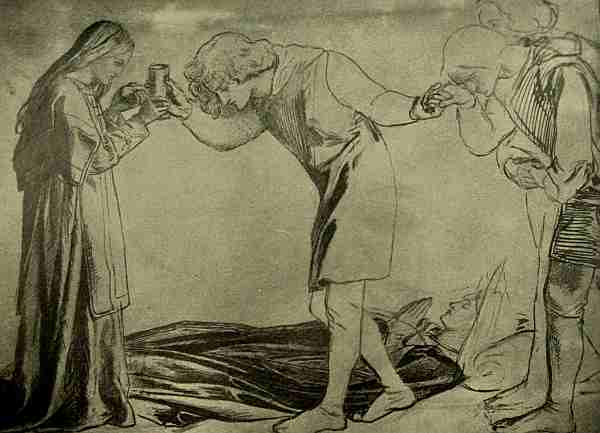
Photo, Mansell
THE SANGRAAL [Pg ix]
PLATE IX
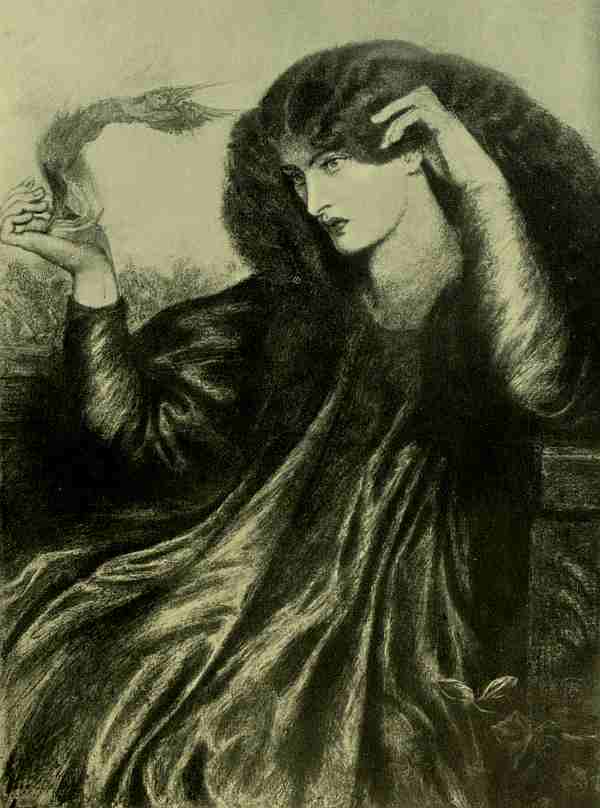
Photo, Mansell
LA DONNA DELLA FIAMMA [Pg x]
PLATE X
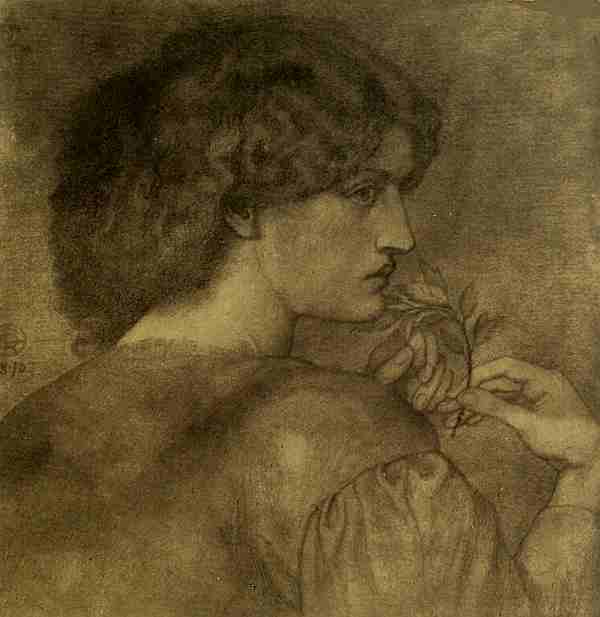
Photo, Mansell
THE ROSELEAF [Pg xi]
PLATE XI
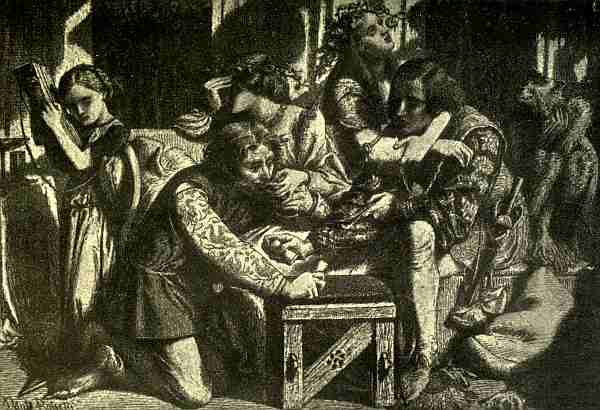
Photo, Mansell
HESTERNA ROSA [Pg xii]
PLATE XII
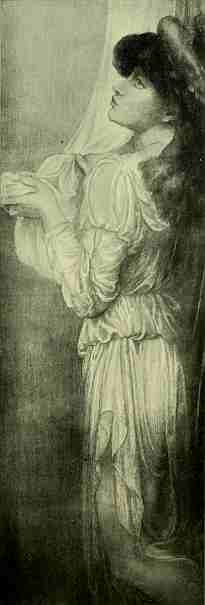
Photo, Hollyer
STUDY FOR LA BELLA MANO [Pg xiii]
PLATE XIII
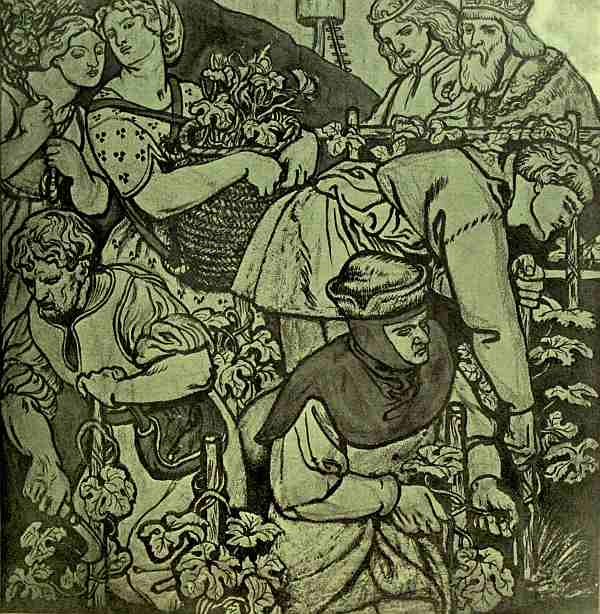
Photo, Mansell
THE PARABLE OF THE VINEYARD [Pg xiv]
PLATE XIV
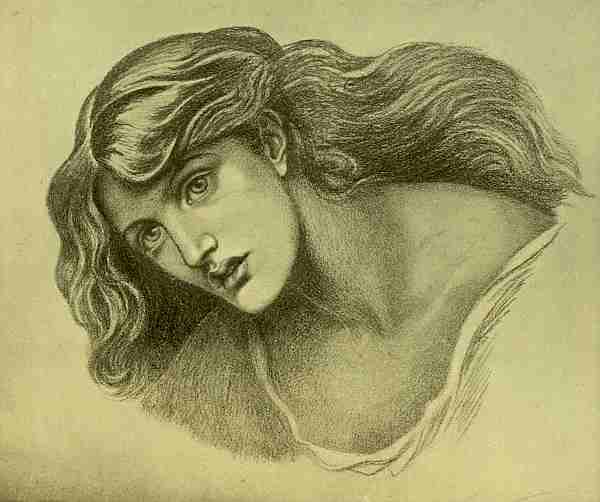
Photo, Hollyer
STUDY FOR HEAD. DESDEMONA'S DEATH SONG [Pg xv]
PLATE XV
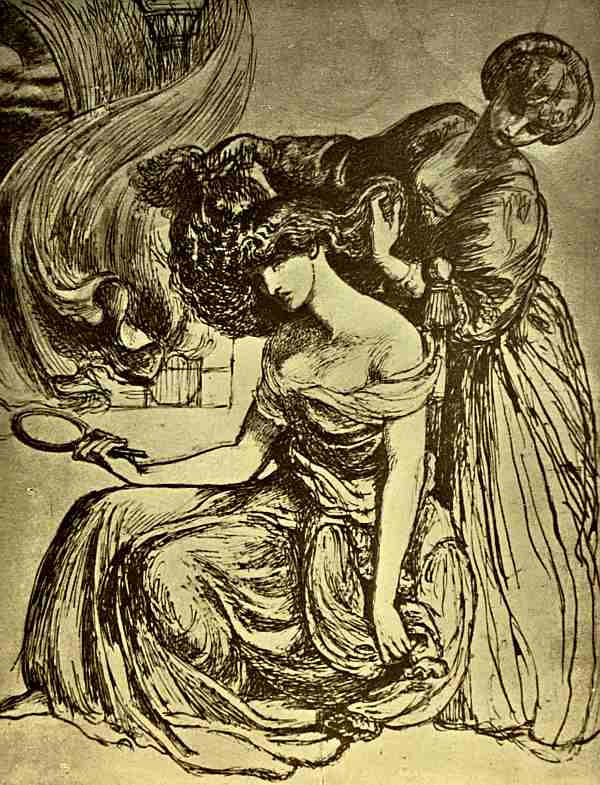
Photo, Mansell
STUDY FOR DESDEMONA'S DEATH SONG [Pg xvi]
PLATE XVI
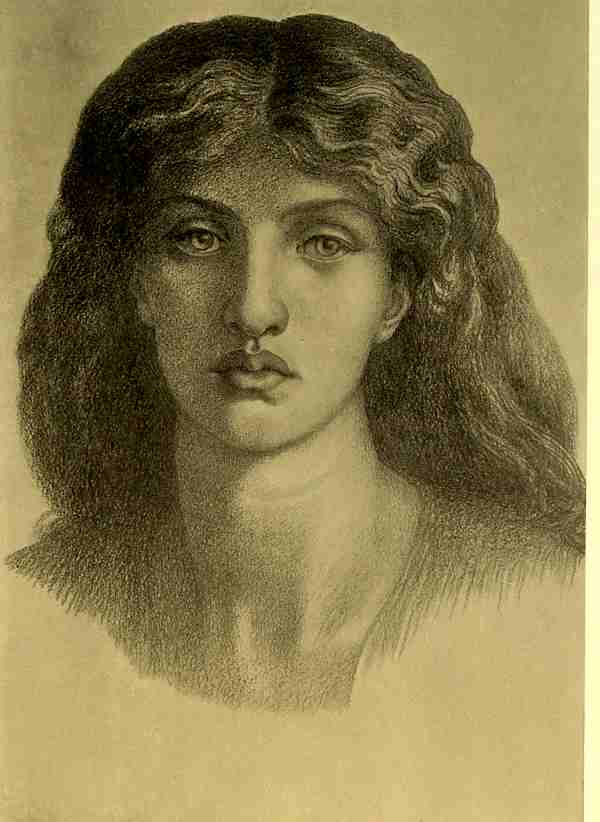
Photo, Hollyer
STUDY FOR ASTARTE SYRIACA [Pg xvii]
PLATE XVII
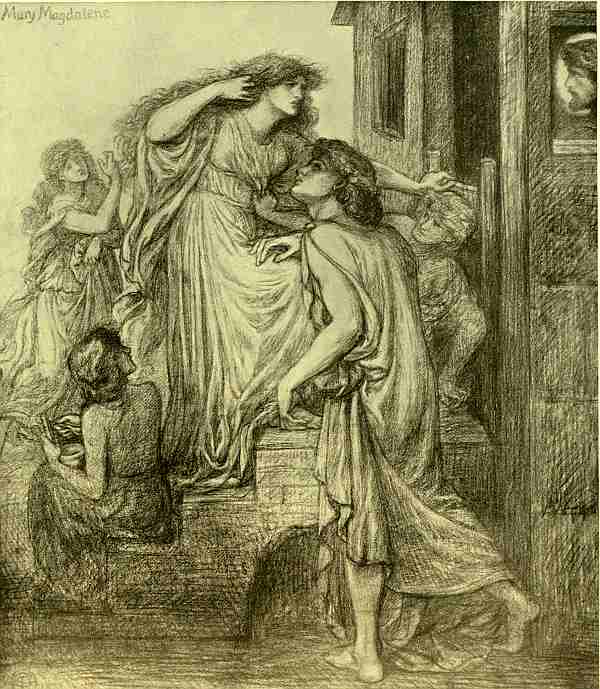
Photo, Hollyer
MARY AT THE DOOR OF SIMON [Pg xviii]
PLATE XVIII
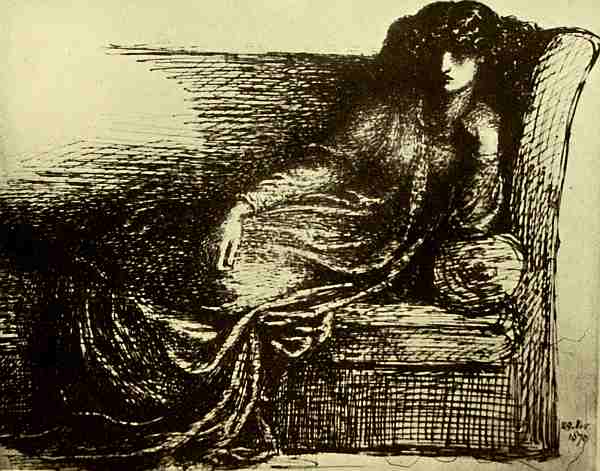
Photo, Mansell
THE COUCH [Pg xix]
PLATE XIX
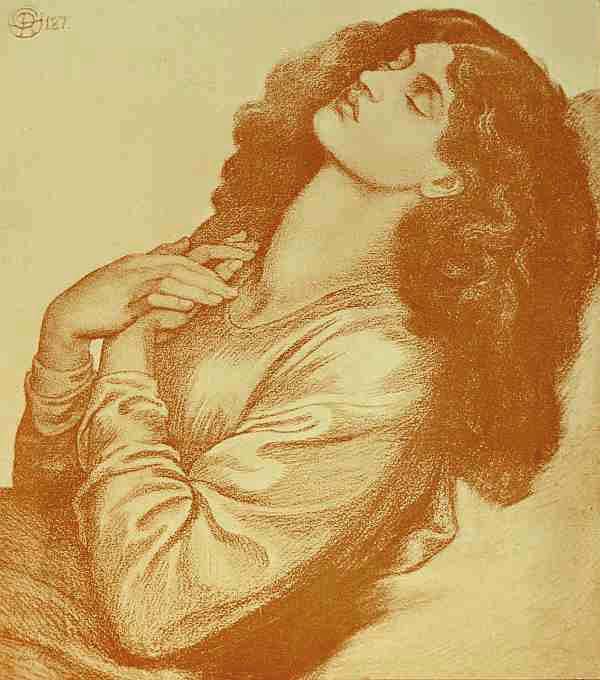
Photo, Mansell
STUDY FOR BEATRICE [Pg xx]
PLATE XX
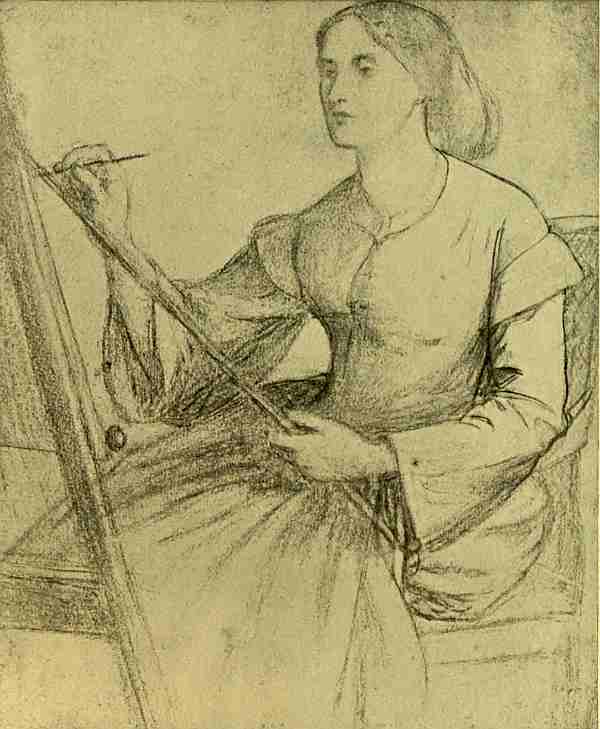
Photo, Mansell
SKETCH OF MISS SIDDAL [Pg xxi]
PLATE XXI
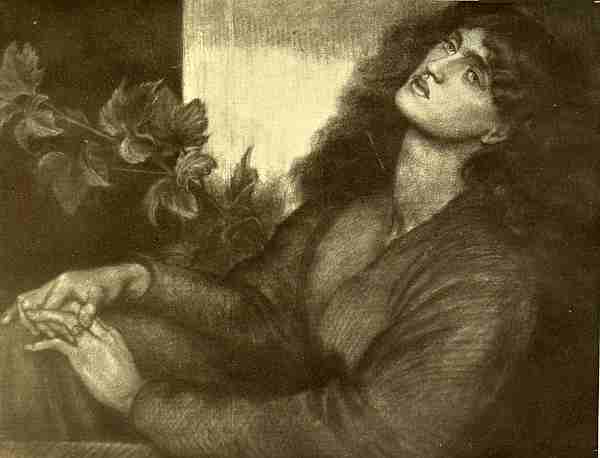
Photo, Caswall Smith
RICORDITI DI ME CHE SON LA PIA [Pg xxii]
PLATE XXII
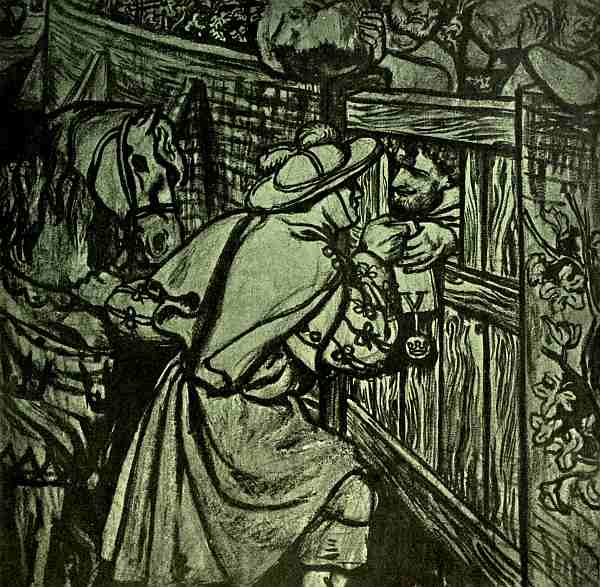
Photo, Mansell
THE PARABLE OF THE VINEYARD [Pg xxiii]
PLATE XXIII
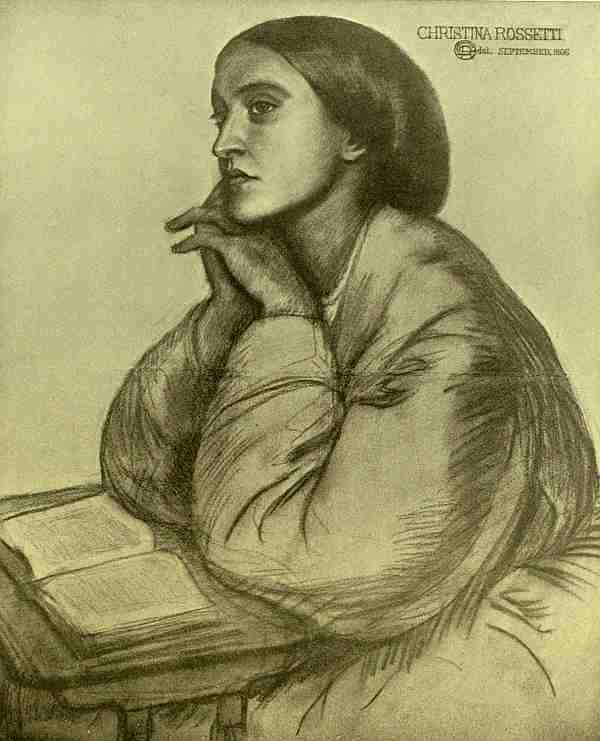
Photo, Mansell
CHRISTINA ROSSETTI [Pg xxiv]
PLATE XXIV
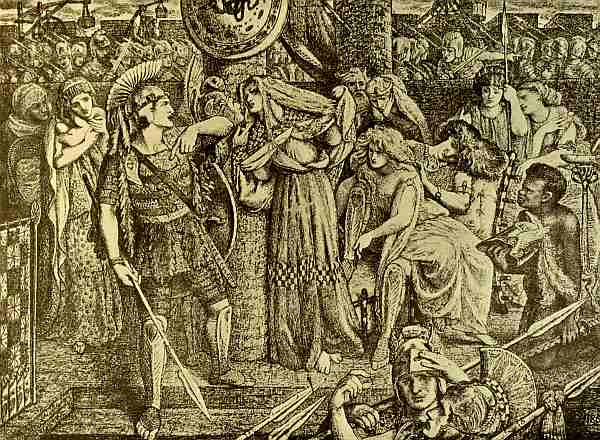
Photo, Mansell
CASSANDRA [Pg xxv]
PLATE XXV
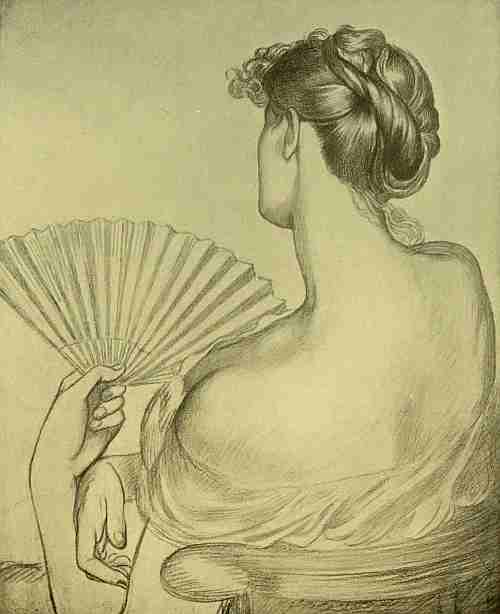
Photo, Hollyer
LADY WITH A FAN [Pg xxvi]
PLATE XXVI
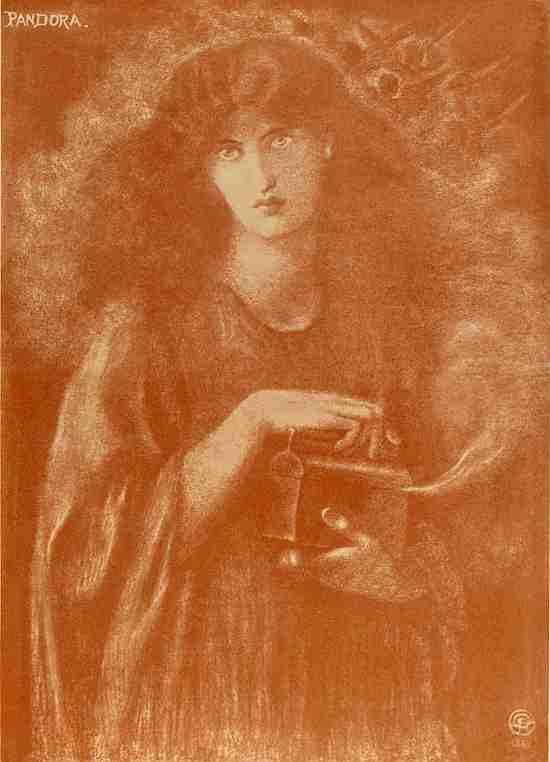
Photo, Mansell
PANDORA [Pg xxvii]
PLATE XXVII
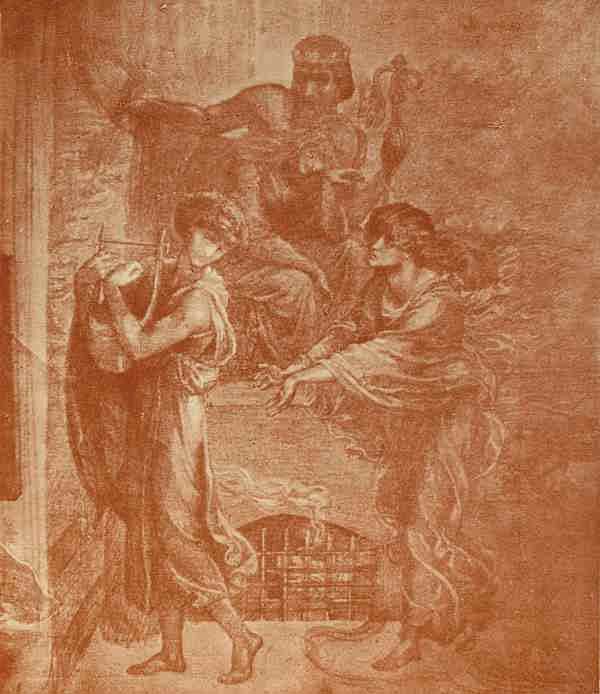
Photo, Mansell
ORPHEUS AND EURYDICE [Pg xxviii]
PLATE XXVIII
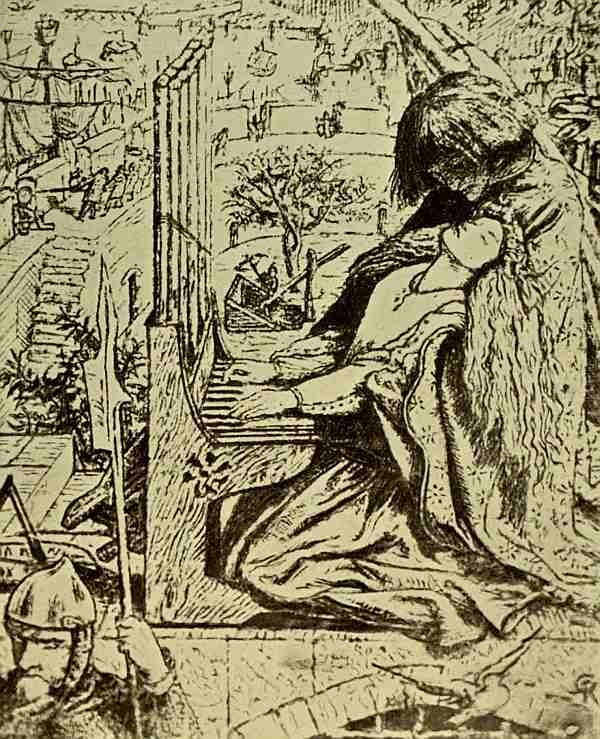
Photo, Mansell
THE PALACE OF ART [Pg xxix]
PLATE XXIX
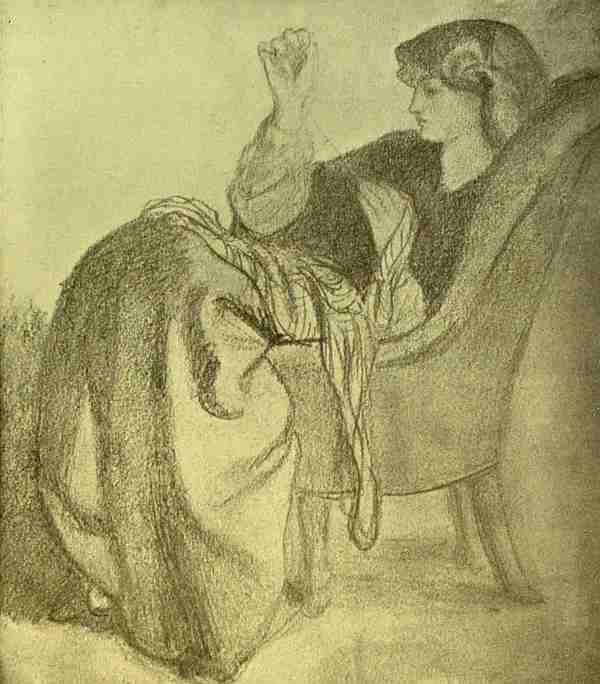
Photo, Mansell
LACHESIS [Pg xxx]
PLATE XXX
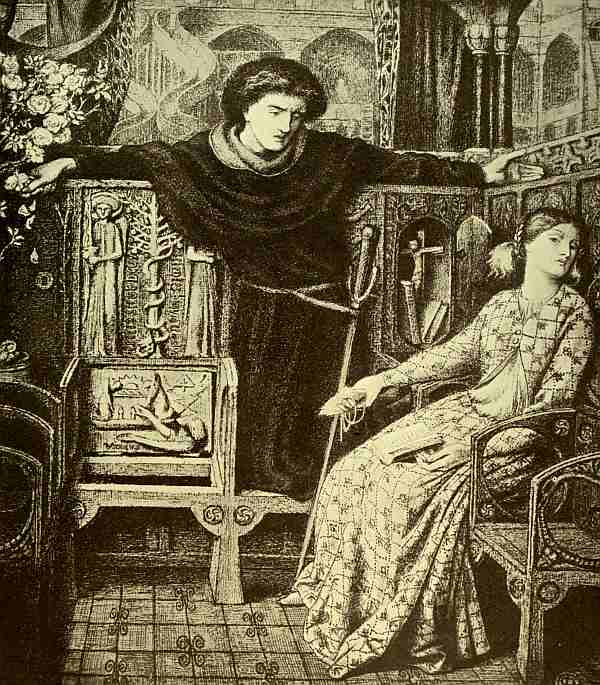
Photo, Mansell
HAMLET AND OPHELIA [Pg xxxi]
PLATE XXXI
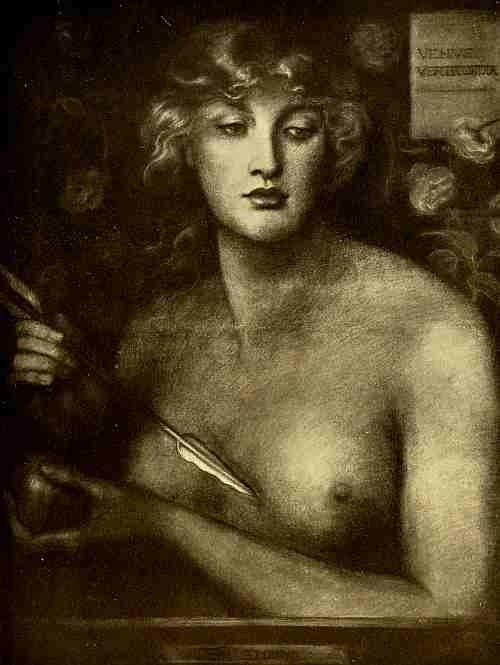
Photo, Caswall Smith
VENUS VERTICORDIA [Pg xxxii]
PLATE XXXII
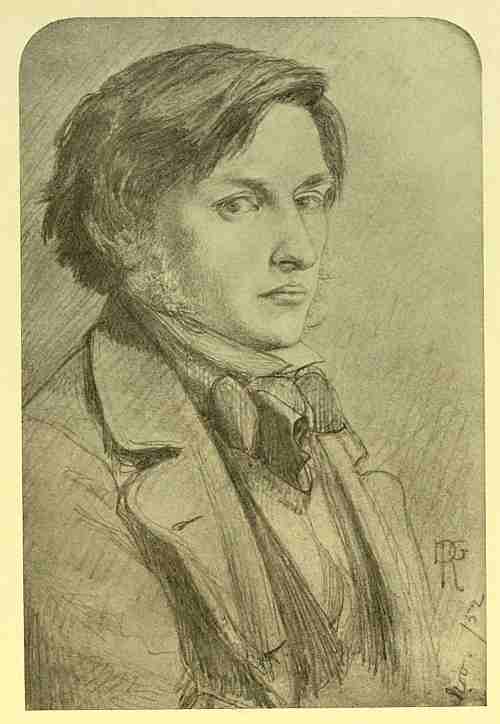
Photo, Hollyer
FORD MADOX BROWN [Pg xxxiii]
PLATE XXXIII
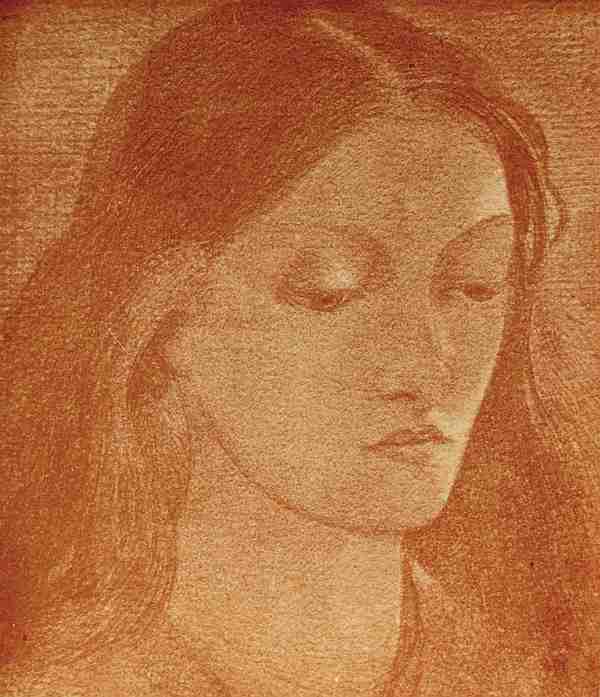
Photo, Hollyer
MISS SIDDAL [Pg xxxiv]
PLATE XXXIV
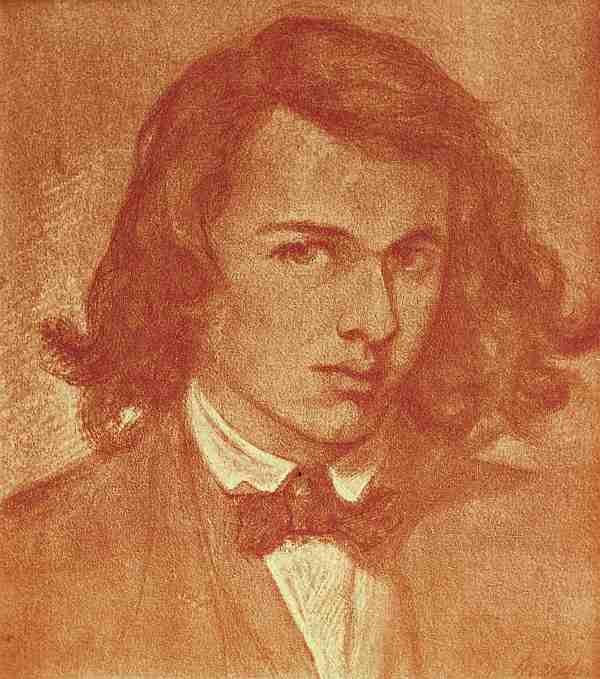
Photo, Hollyer
DANTE GABRIEL ROSSETTI [Pg xxxv]
PLATE XXXV

Photo, Hollyer
STUDY FOR QUEEN GUINEVERE [Pg xxxvi]
PLATE XXXVI
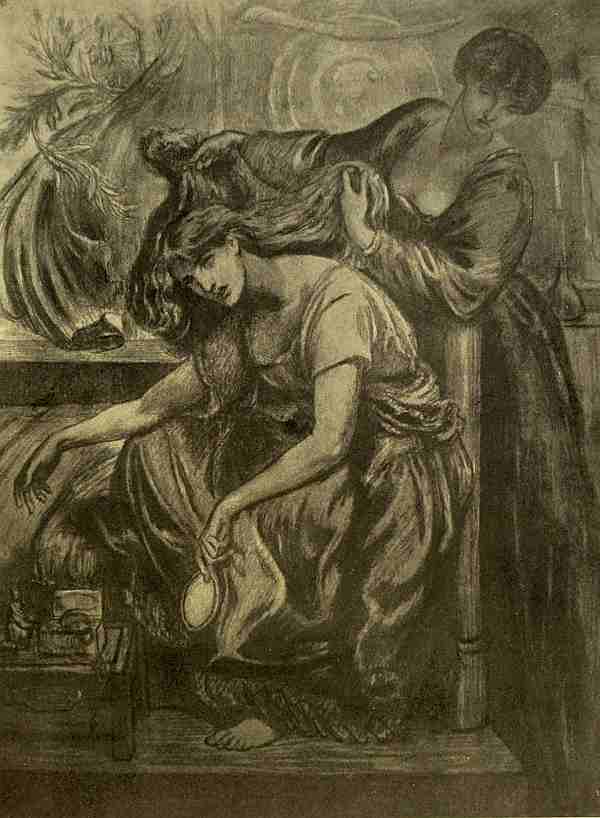
Photo, Mansell
STUDY FOR DESDEMONA'S DEATH SONG [Pg xxxvii]
PLATE XXXVII
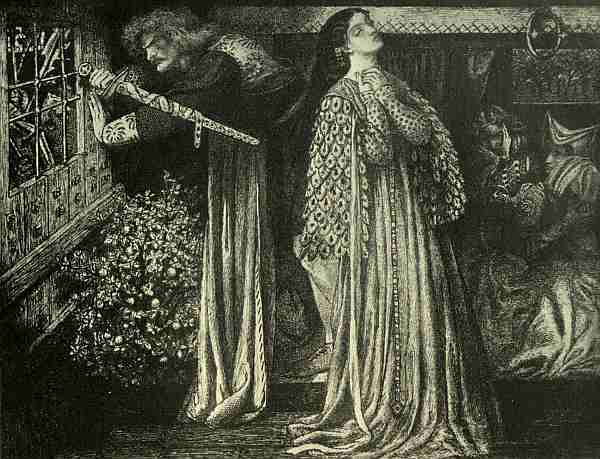
Photo, Hollyer
SIR LAUNCELOT IN THE QUEEN'S CHAMBER [Pg xxxviii]
PLATE XXXVIII
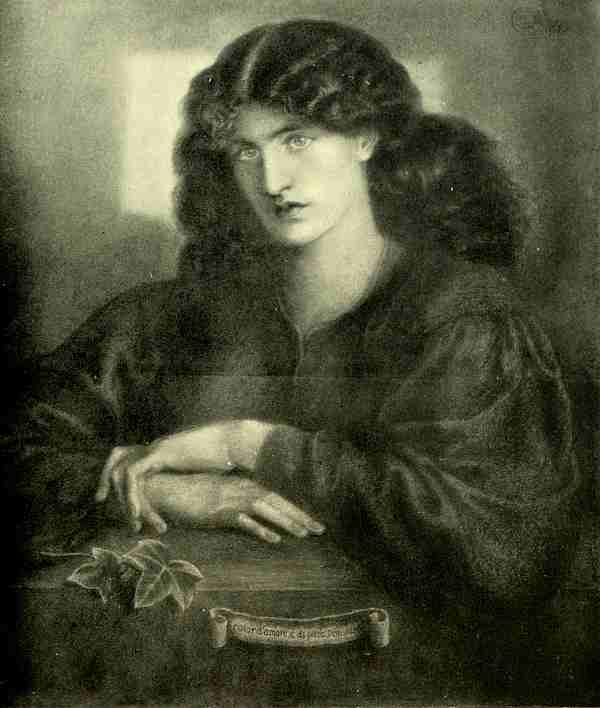
Photo, Hollyer
STUDY FOR LA DONNA DELLA FINESTRA [Pg xxxix]
PLATE XXXIX
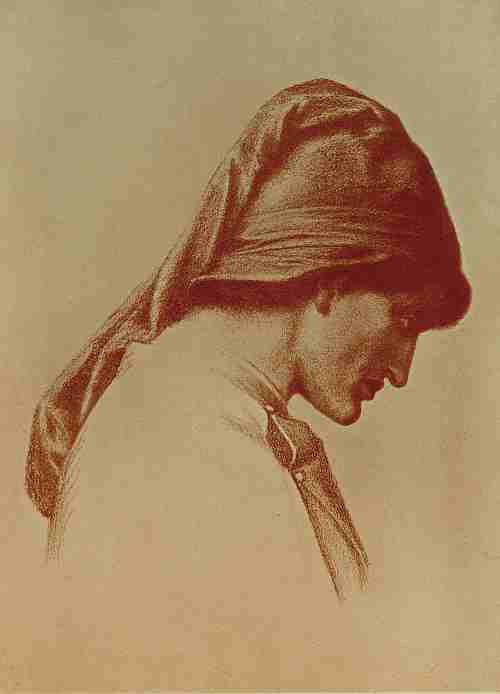
Photo, Mansell
STUDY FOR DANTE'S DREAM [Pg xl]
PLATE XL
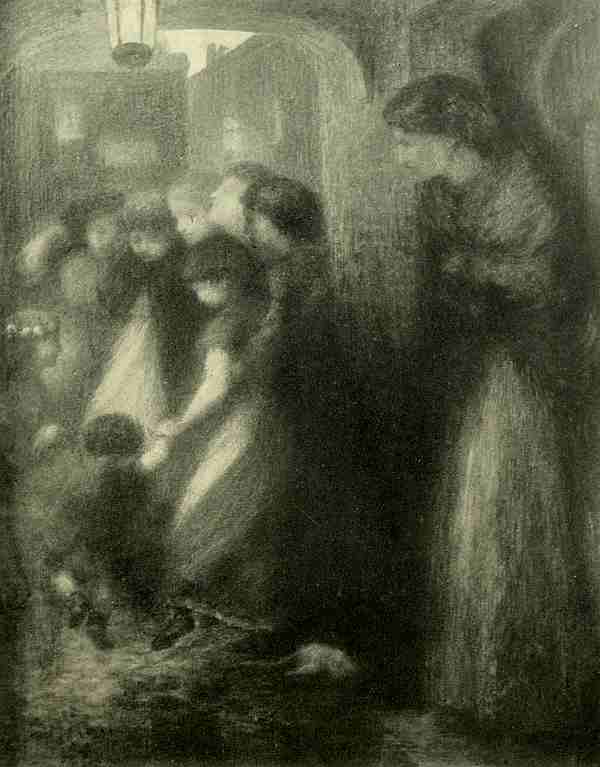
Photo, Hollyer
THE GATE OF MEMORY [Pg xli]
PLATE XLI
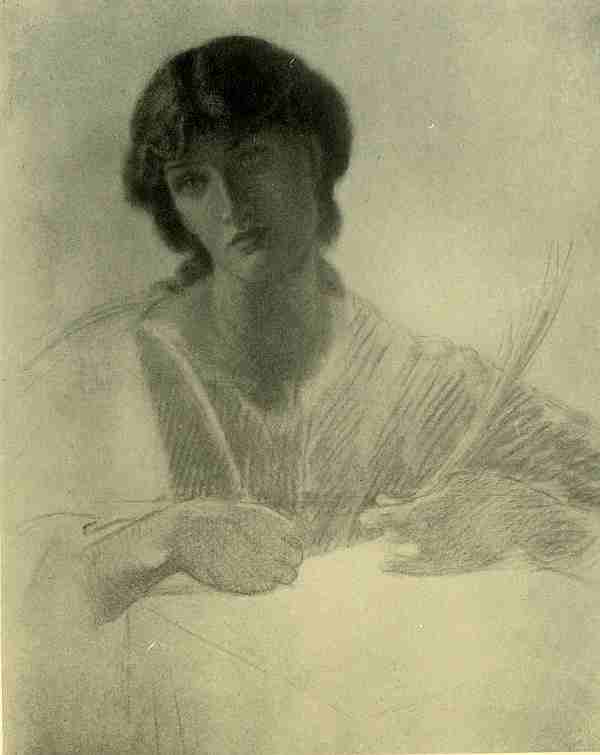
Photo, Hollyer
STUDY FOR THE BLESSED DAMOZEL [Pg xlii]
PLATE XLII
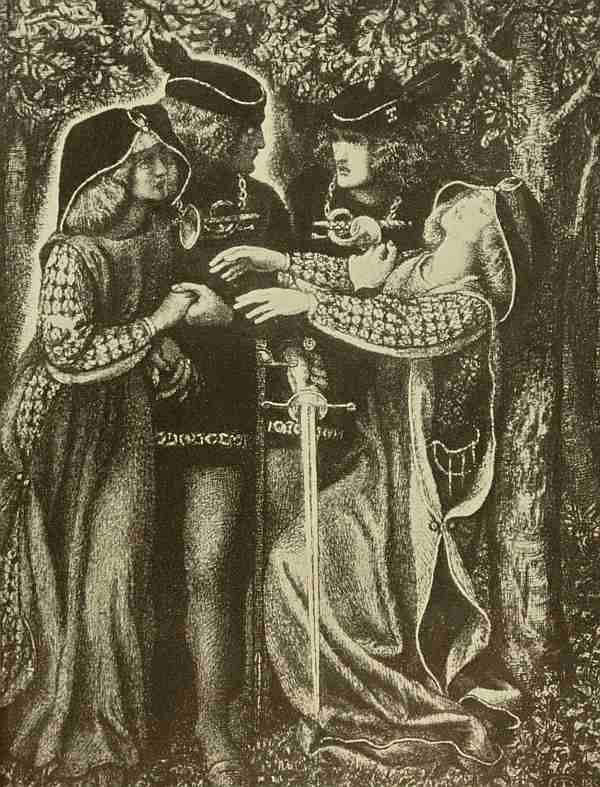
Photo, Mansell
HOW THEY MET THEMSELVES [Pg xliii]
PLATE XLIII
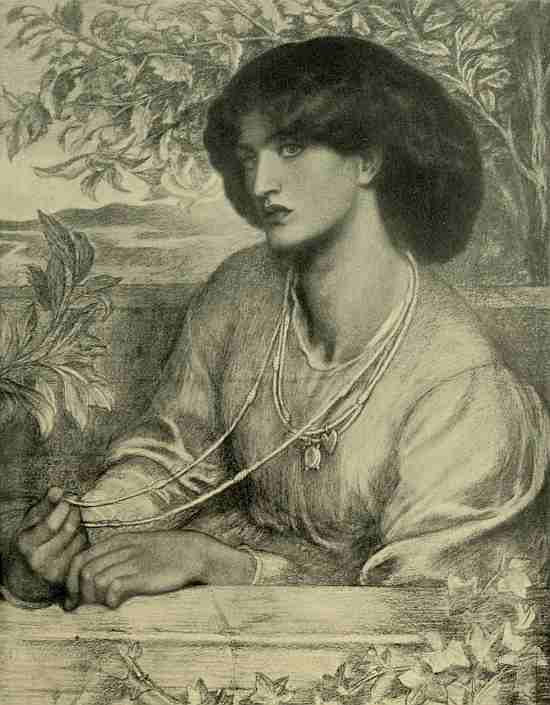
Photo, Hollyer
THE LADY OF THE GOLDEN CHAIN [Pg xliv]
PLATE XLIV
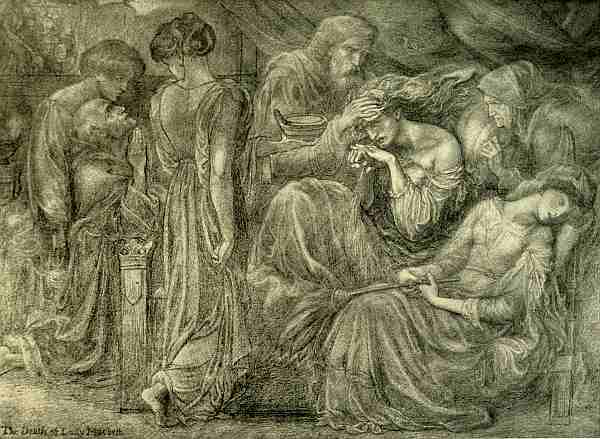
Photo, Mansell
THE DEATH OF LADY MACBETH [Pg xlv]
PLATE XLV
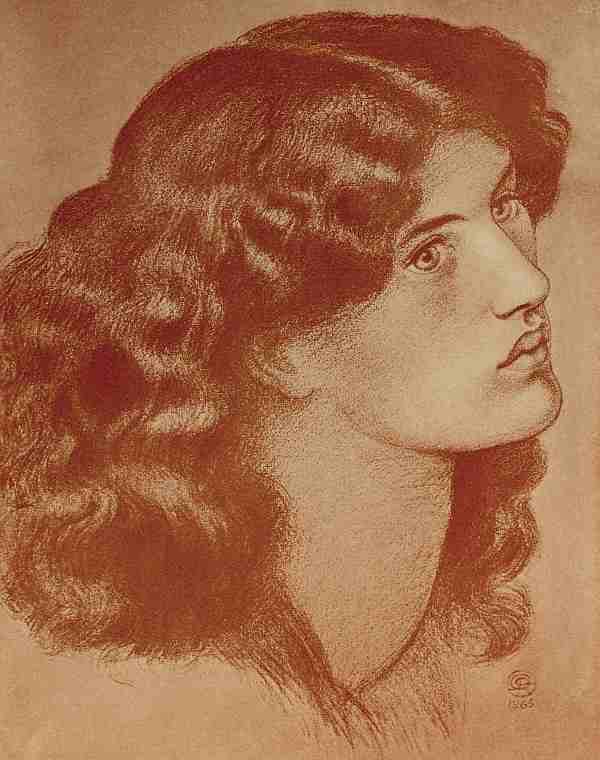
Photo, Mansell
MRS. WILLIAM MORRIS [Pg xlvi]
PLATE XLVI
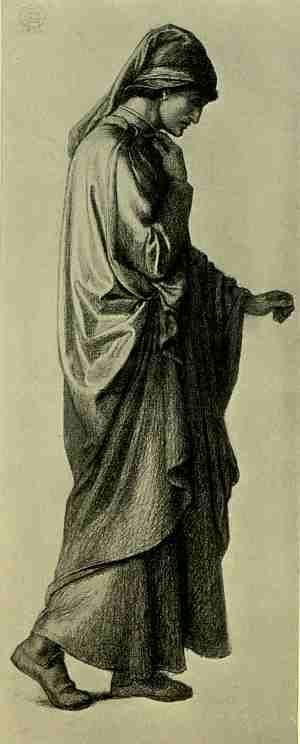
Photo, Hollyer
STUDY FOR DANTE [Pg xlvii]
PLATE XLVII
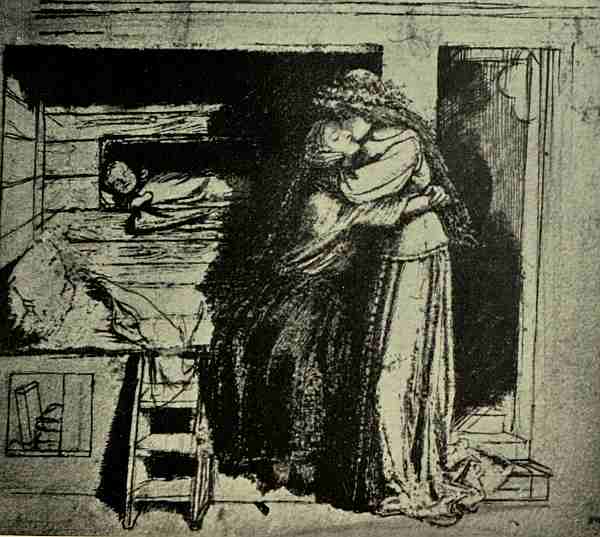
Photo, Mansell
DESIGN FOR A BALLAD [Pg xlviii]
PLATE XLVIII
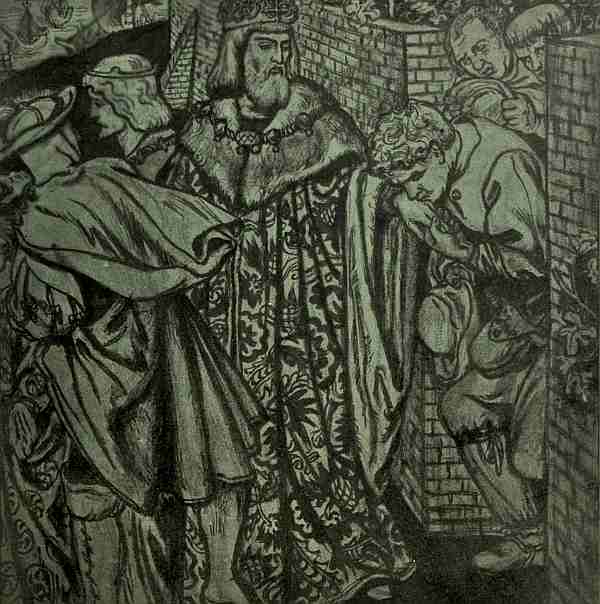
Photo, Mansell
THE PARABLE OF THE VINEYARD
End of the Project Gutenberg EBook of Drawings of Rossetti, by T. Martin Wood
*** END OF THIS PROJECT GUTENBERG EBOOK DRAWINGS OF ROSSETTI ***
***** This file should be named 46087-h.htm or 46087-h.zip *****
This and all associated files of various formats will be found in:
http://www.gutenberg.org/4/6/0/8/46087/
Produced by Paul Marshall, sp1nd and the Online Distributed
Proofreading Team at http://www.pgdp.net (This file was
produced from images generously made available by The
Internet Archive)
Updated editions will replace the previous one--the old editions
will be renamed.
Creating the works from public domain print editions means that no
one owns a United States copyright in these works, so the Foundation
(and you!) can copy and distribute it in the United States without
permission and without paying copyright royalties. Special rules,
set forth in the General Terms of Use part of this license, apply to
copying and distributing Project Gutenberg-tm electronic works to
protect the PROJECT GUTENBERG-tm concept and trademark. Project
Gutenberg is a registered trademark, and may not be used if you
charge for the eBooks, unless you receive specific permission. If you
do not charge anything for copies of this eBook, complying with the
rules is very easy. You may use this eBook for nearly any purpose
such as creation of derivative works, reports, performances and
research. They may be modified and printed and given away--you may do
practically ANYTHING with public domain eBooks. Redistribution is
subject to the trademark license, especially commercial
redistribution.
*** START: FULL LICENSE ***
THE FULL PROJECT GUTENBERG LICENSE
PLEASE READ THIS BEFORE YOU DISTRIBUTE OR USE THIS WORK
To protect the Project Gutenberg-tm mission of promoting the free
distribution of electronic works, by using or distributing this work
(or any other work associated in any way with the phrase "Project
Gutenberg"), you agree to comply with all the terms of the Full Project
Gutenberg-tm License available with this file or online at
www.gutenberg.org/license.
Section 1. General Terms of Use and Redistributing Project Gutenberg-tm
electronic works
1.A. By reading or using any part of this Project Gutenberg-tm
electronic work, you indicate that you have read, understand, agree to
and accept all the terms of this license and intellectual property
(trademark/copyright) agreement. If you do not agree to abide by all
the terms of this agreement, you must cease using and return or destroy
all copies of Project Gutenberg-tm electronic works in your possession.
If you paid a fee for obtaining a copy of or access to a Project
Gutenberg-tm electronic work and you do not agree to be bound by the
terms of this agreement, you may obtain a refund from the person or
entity to whom you paid the fee as set forth in paragraph 1.E.8.
1.B. "Project Gutenberg" is a registered trademark. It may only be
used on or associated in any way with an electronic work by people who
agree to be bound by the terms of this agreement. There are a few
things that you can do with most Project Gutenberg-tm electronic works
even without complying with the full terms of this agreement. See
paragraph 1.C below. There are a lot of things you can do with Project
Gutenberg-tm electronic works if you follow the terms of this agreement
and help preserve free future access to Project Gutenberg-tm electronic
works. See paragraph 1.E below.
1.C. The Project Gutenberg Literary Archive Foundation ("the Foundation"
or PGLAF), owns a compilation copyright in the collection of Project
Gutenberg-tm electronic works. Nearly all the individual works in the
collection are in the public domain in the United States. If an
individual work is in the public domain in the United States and you are
located in the United States, we do not claim a right to prevent you from
copying, distributing, performing, displaying or creating derivative
works based on the work as long as all references to Project Gutenberg
are removed. Of course, we hope that you will support the Project
Gutenberg-tm mission of promoting free access to electronic works by
freely sharing Project Gutenberg-tm works in compliance with the terms of
this agreement for keeping the Project Gutenberg-tm name associated with
the work. You can easily comply with the terms of this agreement by
keeping this work in the same format with its attached full Project
Gutenberg-tm License when you share it without charge with others.
1.D. The copyright laws of the place where you are located also govern
what you can do with this work. Copyright laws in most countries are in
a constant state of change. If you are outside the United States, check
the laws of your country in addition to the terms of this agreement
before downloading, copying, displaying, performing, distributing or
creating derivative works based on this work or any other Project
Gutenberg-tm work. The Foundation makes no representations concerning
the copyright status of any work in any country outside the United
States.
1.E. Unless you have removed all references to Project Gutenberg:
1.E.1. The following sentence, with active links to, or other immediate
access to, the full Project Gutenberg-tm License must appear prominently
whenever any copy of a Project Gutenberg-tm work (any work on which the
phrase "Project Gutenberg" appears, or with which the phrase "Project
Gutenberg" is associated) is accessed, displayed, performed, viewed,
copied or distributed:
This eBook is for the use of anyone anywhere at no cost and with
almost no restrictions whatsoever. You may copy it, give it away or
re-use it under the terms of the Project Gutenberg License included
with this eBook or online at www.gutenberg.org
1.E.2. If an individual Project Gutenberg-tm electronic work is derived
from the public domain (does not contain a notice indicating that it is
posted with permission of the copyright holder), the work can be copied
and distributed to anyone in the United States without paying any fees
or charges. If you are redistributing or providing access to a work
with the phrase "Project Gutenberg" associated with or appearing on the
work, you must comply either with the requirements of paragraphs 1.E.1
through 1.E.7 or obtain permission for the use of the work and the
Project Gutenberg-tm trademark as set forth in paragraphs 1.E.8 or
1.E.9.
1.E.3. If an individual Project Gutenberg-tm electronic work is posted
with the permission of the copyright holder, your use and distribution
must comply with both paragraphs 1.E.1 through 1.E.7 and any additional
terms imposed by the copyright holder. Additional terms will be linked
to the Project Gutenberg-tm License for all works posted with the
permission of the copyright holder found at the beginning of this work.
1.E.4. Do not unlink or detach or remove the full Project Gutenberg-tm
License terms from this work, or any files containing a part of this
work or any other work associated with Project Gutenberg-tm.
1.E.5. Do not copy, display, perform, distribute or redistribute this
electronic work, or any part of this electronic work, without
prominently displaying the sentence set forth in paragraph 1.E.1 with
active links or immediate access to the full terms of the Project
Gutenberg-tm License.
1.E.6. You may convert to and distribute this work in any binary,
compressed, marked up, nonproprietary or proprietary form, including any
word processing or hypertext form. However, if you provide access to or
distribute copies of a Project Gutenberg-tm work in a format other than
"Plain Vanilla ASCII" or other format used in the official version
posted on the official Project Gutenberg-tm web site (www.gutenberg.org),
you must, at no additional cost, fee or expense to the user, provide a
copy, a means of exporting a copy, or a means of obtaining a copy upon
request, of the work in its original "Plain Vanilla ASCII" or other
form. Any alternate format must include the full Project Gutenberg-tm
License as specified in paragraph 1.E.1.
1.E.7. Do not charge a fee for access to, viewing, displaying,
performing, copying or distributing any Project Gutenberg-tm works
unless you comply with paragraph 1.E.8 or 1.E.9.
1.E.8. You may charge a reasonable fee for copies of or providing
access to or distributing Project Gutenberg-tm electronic works provided
that
- You pay a royalty fee of 20% of the gross profits you derive from
the use of Project Gutenberg-tm works calculated using the method
you already use to calculate your applicable taxes. The fee is
owed to the owner of the Project Gutenberg-tm trademark, but he
has agreed to donate royalties under this paragraph to the
Project Gutenberg Literary Archive Foundation. Royalty payments
must be paid within 60 days following each date on which you
prepare (or are legally required to prepare) your periodic tax
returns. Royalty payments should be clearly marked as such and
sent to the Project Gutenberg Literary Archive Foundation at the
address specified in Section 4, "Information about donations to
the Project Gutenberg Literary Archive Foundation."
- You provide a full refund of any money paid by a user who notifies
you in writing (or by e-mail) within 30 days of receipt that s/he
does not agree to the terms of the full Project Gutenberg-tm
License. You must require such a user to return or
destroy all copies of the works possessed in a physical medium
and discontinue all use of and all access to other copies of
Project Gutenberg-tm works.
- You provide, in accordance with paragraph 1.F.3, a full refund of any
money paid for a work or a replacement copy, if a defect in the
electronic work is discovered and reported to you within 90 days
of receipt of the work.
- You comply with all other terms of this agreement for free
distribution of Project Gutenberg-tm works.
1.E.9. If you wish to charge a fee or distribute a Project Gutenberg-tm
electronic work or group of works on different terms than are set
forth in this agreement, you must obtain permission in writing from
both the Project Gutenberg Literary Archive Foundation and Michael
Hart, the owner of the Project Gutenberg-tm trademark. Contact the
Foundation as set forth in Section 3 below.
1.F.
1.F.1. Project Gutenberg volunteers and employees expend considerable
effort to identify, do copyright research on, transcribe and proofread
public domain works in creating the Project Gutenberg-tm
collection. Despite these efforts, Project Gutenberg-tm electronic
works, and the medium on which they may be stored, may contain
"Defects," such as, but not limited to, incomplete, inaccurate or
corrupt data, transcription errors, a copyright or other intellectual
property infringement, a defective or damaged disk or other medium, a
computer virus, or computer codes that damage or cannot be read by
your equipment.
1.F.2. LIMITED WARRANTY, DISCLAIMER OF DAMAGES - Except for the "Right
of Replacement or Refund" described in paragraph 1.F.3, the Project
Gutenberg Literary Archive Foundation, the owner of the Project
Gutenberg-tm trademark, and any other party distributing a Project
Gutenberg-tm electronic work under this agreement, disclaim all
liability to you for damages, costs and expenses, including legal
fees. YOU AGREE THAT YOU HAVE NO REMEDIES FOR NEGLIGENCE, STRICT
LIABILITY, BREACH OF WARRANTY OR BREACH OF CONTRACT EXCEPT THOSE
PROVIDED IN PARAGRAPH 1.F.3. YOU AGREE THAT THE FOUNDATION, THE
TRADEMARK OWNER, AND ANY DISTRIBUTOR UNDER THIS AGREEMENT WILL NOT BE
LIABLE TO YOU FOR ACTUAL, DIRECT, INDIRECT, CONSEQUENTIAL, PUNITIVE OR
INCIDENTAL DAMAGES EVEN IF YOU GIVE NOTICE OF THE POSSIBILITY OF SUCH
DAMAGE.
1.F.3. LIMITED RIGHT OF REPLACEMENT OR REFUND - If you discover a
defect in this electronic work within 90 days of receiving it, you can
receive a refund of the money (if any) you paid for it by sending a
written explanation to the person you received the work from. If you
received the work on a physical medium, you must return the medium with
your written explanation. The person or entity that provided you with
the defective work may elect to provide a replacement copy in lieu of a
refund. If you received the work electronically, the person or entity
providing it to you may choose to give you a second opportunity to
receive the work electronically in lieu of a refund. If the second copy
is also defective, you may demand a refund in writing without further
opportunities to fix the problem.
1.F.4. Except for the limited right of replacement or refund set forth
in paragraph 1.F.3, this work is provided to you 'AS-IS', WITH NO OTHER
WARRANTIES OF ANY KIND, EXPRESS OR IMPLIED, INCLUDING BUT NOT LIMITED TO
WARRANTIES OF MERCHANTABILITY OR FITNESS FOR ANY PURPOSE.
1.F.5. Some states do not allow disclaimers of certain implied
warranties or the exclusion or limitation of certain types of damages.
If any disclaimer or limitation set forth in this agreement violates the
law of the state applicable to this agreement, the agreement shall be
interpreted to make the maximum disclaimer or limitation permitted by
the applicable state law. The invalidity or unenforceability of any
provision of this agreement shall not void the remaining provisions.
1.F.6. INDEMNITY - You agree to indemnify and hold the Foundation, the
trademark owner, any agent or employee of the Foundation, anyone
providing copies of Project Gutenberg-tm electronic works in accordance
with this agreement, and any volunteers associated with the production,
promotion and distribution of Project Gutenberg-tm electronic works,
harmless from all liability, costs and expenses, including legal fees,
that arise directly or indirectly from any of the following which you do
or cause to occur: (a) distribution of this or any Project Gutenberg-tm
work, (b) alteration, modification, or additions or deletions to any
Project Gutenberg-tm work, and (c) any Defect you cause.
Section 2. Information about the Mission of Project Gutenberg-tm
Project Gutenberg-tm is synonymous with the free distribution of
electronic works in formats readable by the widest variety of computers
including obsolete, old, middle-aged and new computers. It exists
because of the efforts of hundreds of volunteers and donations from
people in all walks of life.
Volunteers and financial support to provide volunteers with the
assistance they need are critical to reaching Project Gutenberg-tm's
goals and ensuring that the Project Gutenberg-tm collection will
remain freely available for generations to come. In 2001, the Project
Gutenberg Literary Archive Foundation was created to provide a secure
and permanent future for Project Gutenberg-tm and future generations.
To learn more about the Project Gutenberg Literary Archive Foundation
and how your efforts and donations can help, see Sections 3 and 4
and the Foundation information page at www.gutenberg.org
Section 3. Information about the Project Gutenberg Literary Archive
Foundation
The Project Gutenberg Literary Archive Foundation is a non profit
501(c)(3) educational corporation organized under the laws of the
state of Mississippi and granted tax exempt status by the Internal
Revenue Service. The Foundation's EIN or federal tax identification
number is 64-6221541. Contributions to the Project Gutenberg
Literary Archive Foundation are tax deductible to the full extent
permitted by U.S. federal laws and your state's laws.
The Foundation's principal office is located at 4557 Melan Dr. S.
Fairbanks, AK, 99712., but its volunteers and employees are scattered
throughout numerous locations. Its business office is located at 809
North 1500 West, Salt Lake City, UT 84116, (801) 596-1887. Email
contact links and up to date contact information can be found at the
Foundation's web site and official page at www.gutenberg.org/contact
For additional contact information:
Dr. Gregory B. Newby
Chief Executive and Director
[email protected]
Section 4. Information about Donations to the Project Gutenberg
Literary Archive Foundation
Project Gutenberg-tm depends upon and cannot survive without wide
spread public support and donations to carry out its mission of
increasing the number of public domain and licensed works that can be
freely distributed in machine readable form accessible by the widest
array of equipment including outdated equipment. Many small donations
($1 to $5,000) are particularly important to maintaining tax exempt
status with the IRS.
The Foundation is committed to complying with the laws regulating
charities and charitable donations in all 50 states of the United
States. Compliance requirements are not uniform and it takes a
considerable effort, much paperwork and many fees to meet and keep up
with these requirements. We do not solicit donations in locations
where we have not received written confirmation of compliance. To
SEND DONATIONS or determine the status of compliance for any
particular state visit www.gutenberg.org/donate
While we cannot and do not solicit contributions from states where we
have not met the solicitation requirements, we know of no prohibition
against accepting unsolicited donations from donors in such states who
approach us with offers to donate.
International donations are gratefully accepted, but we cannot make
any statements concerning tax treatment of donations received from
outside the United States. U.S. laws alone swamp our small staff.
Please check the Project Gutenberg Web pages for current donation
methods and addresses. Donations are accepted in a number of other
ways including checks, online payments and credit card donations.
To donate, please visit: www.gutenberg.org/donate
Section 5. General Information About Project Gutenberg-tm electronic
works.
Professor Michael S. Hart was the originator of the Project Gutenberg-tm
concept of a library of electronic works that could be freely shared
with anyone. For forty years, he produced and distributed Project
Gutenberg-tm eBooks with only a loose network of volunteer support.
Project Gutenberg-tm eBooks are often created from several printed
editions, all of which are confirmed as Public Domain in the U.S.
unless a copyright notice is included. Thus, we do not necessarily
keep eBooks in compliance with any particular paper edition.
Most people start at our Web site which has the main PG search facility:
www.gutenberg.org
This Web site includes information about Project Gutenberg-tm,
including how to make donations to the Project Gutenberg Literary
Archive Foundation, how to help produce our new eBooks, and how to
subscribe to our email newsletter to hear about new eBooks.